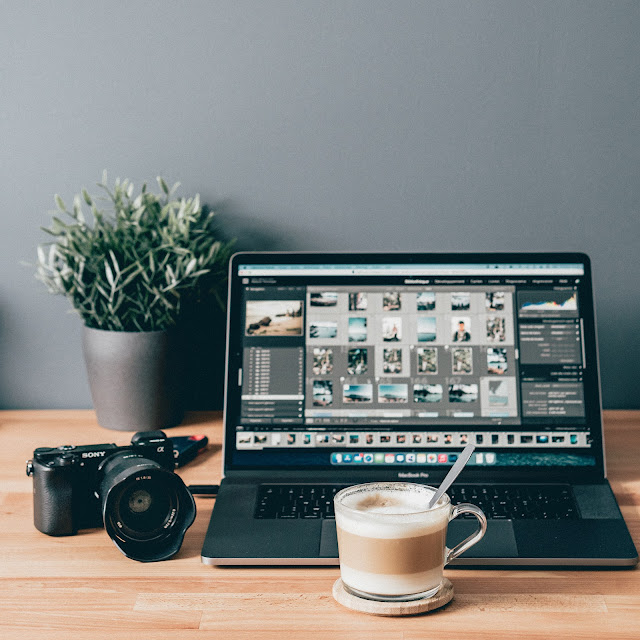Website optimization strategies
Website optimization strategies are essential for achieving SEO success, and they involve various techniques and tactics that aim to improve a website's search engine rankings, attract organic traffic, and increase conversions. Search Engine Optimization SEO is the process of improving a website's visibility in search engine results pages SERPs. SEO is not a one-time event but rather an ongoing process that takes time, effort, and patience.The ultimate goal of SEO is to make a website rank higher in the search results, which will increase the visibility of the website, attract more visitors, increase brand awareness, and ultimately lead to more revenue. Here is the ultimate guide to website optimization strategies for SEO success.
1. Keyword Research
The first step in any SEO campaign is to identify relevant keywords that are relevant to the business and which the potential customers are likely to search for. For effective keyword research, you need to use SEO tools such as Google Keyword Planner, Ahrefs, or SEMrush to find keywords that have high search volumes and low competition.2. On-Page Optimization
On-page optimization involves optimizing the website's content and HTML source code to make it more relevant and user-friendly. This involves techniques such as optimizing meta tags, improving website speed, using header tags, internal linking, and optimizing images and videos.3. Off-Page Optimization
Off-page optimization involves techniques and tactics that focus on improving a website's authority, popularity, and relevance through inbound linking activities such as link building, social bookmarking, guest blogging, and directory submissions.4. Content Marketing
Content marketing is an essential aspect of SEO and involves publishing high-quality, relevant, and engaging content that attracts traffic and encourages them to stay on the website longer, leading to more conversions. Valuable content such as blog posts, videos, and infographics can also help establish the website's authority and develop a loyal audience.5. Local SEO
Local SEO is a vital aspect of website optimization strategies, and it involves optimizing the website for local searches, including the targeted location. Techniques such as inclusion of location-targeted keywords, verification of Google My Business listing, and inclusion of the organization's name, address, and phone number NAP in local listings and directories can increase local visibility and generate relevant traffic.6. Technical SEO
Technical SEO is a crucial aspect of website optimization strategies, and it involves optimizing the website's technical architecture, including the website's structure, URLs, redirects, robots. txt, sitemap, and other elements that influence search engines' crawling and indexing activities.7. User Experience Optimization
User experience optimization focuses on creating a user-friendly and engaging interface that ensures the visitors stay on the website longer, thus reducing the bounce rate. Techniques include optimizing website speed and performance, ensuring mobile responsiveness, having intuitive navigation, and designing appealing visual elements such as images and videos.8. Inbound Linking
Inbound linking plays a critical role in website optimization strategies, and it involves getting high-quality and relevant websites to link back to your website. Techniques include writing guest posts, creating infographics and videos that are shareable, and participating in social media marketing activities.9. Metrics and Analytics
Metrics and analytics play a vital role in website optimization strategies, and they help track key performance indicators KPIs such as website traffic, click-through rates CTR, conversion rates, bounce rates, and other metrics that help measure the ROI.10. Black-hat vs. White-hat SEO
Black-hat SEO involves unethical tactics and approaches that violate search engines' guidelines and may result in penalties such as lower SERP rankings or total removal from the search results. White-hat SEO involves ethical and legitimate techniques and practices that align with search engines' guidelines and help improve rankings, traffic and conversions without risking penalties.In conclusion, the ultimate guide to website optimization strategies for SEO success involves a multifaceted approach that includes keyword research, on-page optimization, off-page optimization, content marketing, local SEO, technical SEO, user experience optimization, inbound linking, metrics, and analytics, and the choice between black-hat and white-hat SEO. By implementing these optimization strategies, website owners and digital marketers can achieve higher SERP rankings, attract more organic traffic, and increase conversions, leading to a more successful online presence.
Further reading:
Search engine optimization key to ranking in SERPs: https://newbeltane.tech/2023/03/26/search-engine-optimisation/Things Every Small Business Needs to Know About Web Optimisation: https://newbeltane.tech/2023/03/06/web-optimisation-for-business/
Optimise your site for maximum results: https://newbeltane.tech/2023/02/28/optimise-your-site-for-maximum-results/

.jpg)













